Copyright Debra Komar, 2019
All rights reserved. No part of this publication may be reproduced, stored in a retrieval system, or transmitted in any form or by any means, electronic, mechanical, photocopying, recording, or otherwise (except for brief passages for purpose of review) without the prior permission of Dundurn Press. Permission to photocopy should be requested from Access Copyright.
Cover image: Courtesy of MEARS Online Auctions
Printer: Webcom, a division of Marquis Book Printing Inc.
Title: The court of better fiction : three trials, two executions, and Arctic sovereignty / Debra Komar.
Names: Komar, Debra, 1965- author.
Description: Includes bibliographical references and index.
Identifiers: Canadiana (print) 20189065605 | Canadiana (ebook) 20189065613 | ISBN 9781459744080 (softcover) | ISBN 9781459744097 (PDF) | ISBN 9781459744103 (EPUB)
Subjects: LCSH: Tatamigana, -1924 | LCSH: Alikomiak, -1924 | LCSH: MurderNunavut. | LCSH: Trials (Murder)Yukon. | LCSH: InuitCanadaGovernment relations. | LCSH: InuitLegal status, laws, etc.Canada. | LCSH: CanadaEthnic relations.
Classification: LCC HV6535.C32 N9 2019 | DDC 364.152/3097195dc23
1 2 3 4 5 23 22 21 20 19
We acknowledge the support of the Canada Council for the Arts, which last year invested $153 million to bring the arts to Canadians throughout the country, and the Ontario Arts Council for our publishing program. We also acknowledge the financial support of the Government of Ontario, through the Ontario Book Publishing Tax Credit, Ontario Creates, and the Government of Canada.
Nous remercions le Conseil des arts du Canada de son soutien. Lan dernier, le Conseil a investi 153 millions de dollars pour mettre de lart dans la vie des Canadiennes et des Canadiens de tout le pays.
Care has been taken to trace the ownership of copyright material used in this book. The author and the publisher welcome any information enabling them to rectify any references or credits in subsequent editions.
J. Kirk Howard, President
The publisher is not responsible for websites or their content unless they are owned by the publisher.
Printed and bound in Canada.
VISIT US AT
 dundurn.com
dundurn.com
 @dundurnpress
@dundurnpress
 dundurnpress
dundurnpress
 dundurnpress
dundurnpress
Dundurn
3 Church Street, Suite 500
Toronto, Ontario, Canada
M5E 1M2
In memory of RCMP Corporal Jim Galloway, killed in the line of duty February 28, 2004 one of the good guys.
Loved ones demand honesty, but what they really want is better fiction.
David Byrne, The New Sins
Contents

Map of Canadas northern coast, including Nunavut and the Northwest and Yukon Territories. Although the relevant place names remain the same, in 1921 Nunavut and the Northwest Territories were combined. The distance between Tree River, NWT, and Herschel Island, YT, is approximately 692 miles.
Prologue
On December 6, 1921, Royal Canadian Mounted Police Corporal William Doak arrested a young Inuit male named Alikomiak a few miles inland from the northeast coast of the Northwest Territories. Alikomiak was accused of murdering his uncle, the final blow in a series of retaliatory killings between rival families. He did not resist arrest and went willingly with the RCMP officer to the Tree River detachment.
The police outpost had no holding cell, forcing Doak to detain Alikomiak in the barracks storage shed. Doak was not a large man, but he towered over the prisoner, who was quite young, short and [of] very slight build. Alikomiaks cringing obedience soon earned Doaks trust and he was given free run of the small detachment, performing menial tasks to appease his captor.
As the first feeble signs of spring arrived in 1922, Doaks subordinates were all otherwise engaged, leaving him alone to supervise the accused.
The next morning, Doak used the rare moments of privacy to sleep in. His service revolver was within easy reach, holstered and draped over the bedpost near his head. Just before sunrise, Alikomiak went into the unlocked Police store house and took a rifle and four bullets. He crept into the barracks and saw that Doak was still asleep on his right side with his face to the wall. Alikomiak moved to the left of the cook stove ten feet from Doaks bed. He raised his rifle and fired once, hitting Doak in the left buttock.
The corporal awoke with a scream. He tried to sit up, but was in too much pain. Rising onto his left elbow, Doak looked at Alikomiak and shouted, What is the matter with you?
Alikomiak bolted out the door, but he paused to look through the window near the wounded mans bunk. He saw that Doak had turned in his bed with his legs hanging over the side and his head against the wall. He was groaning and his eyes were sometimes open. Blood flowed from the corporals mouth and Alikomiak knew he was close to dead.
The Inuk returned to the sleeping quarters. He lifted Doaks legs onto the bed and covered him with a blanket. Doak eventually lost consciousness and was dead before the sun cleared the horizon. According to police, Corporal William Doak would not be the only man Alikomiak killed that day.
He was arrested later that afternoon by Constable Daniel Harrison Woolams at a seal camp seven miles from the Tree River detachment. He did not resist arrest, asking only to change his boots before surrendering to police.
Alikomiak made a full confession through an RCMP translator. In his statement he recounted the killing in graphic detail, including Doaks final words. That confession would be the sole evidence against Alikomiak in the trial that followed.
There are several glaring inconsistencies in Alikomiaks account, irregularities that investigators, the prosecutor, jurors, and the judge failed to notice at the time and that all legal scholars studying the case have failed to notice in the decades since. One of the most obvious was that only two people were in the room when Doak was killed: the victim and the perpetrator. Alikomiak could not speak a word of English and Doak knew nothing of the local language. Throughout his incarceration the two had communicated exclusively through hand gestures. So, how could Alikomiak possibly have known what Doak said in the moments before he died?
I: DIFFERENT SCALES
During the past 10 years there have been 7 white men murdered by Eskimos. In addition there are known 17 murders among the Eskimos themselves, not including the victims of infanticide.
In all, there are not more than 3000 Eskimos in the Canadian Arctic, and a record of 24 known murders in such a sparsely peopled country indicates that the native is not as mild and gentle as described by some.


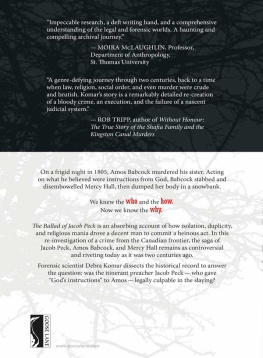
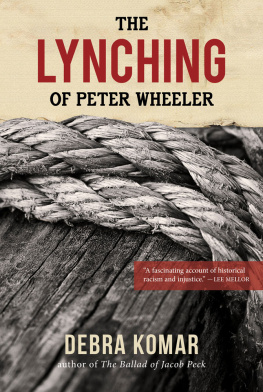

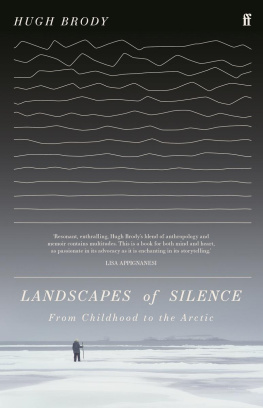
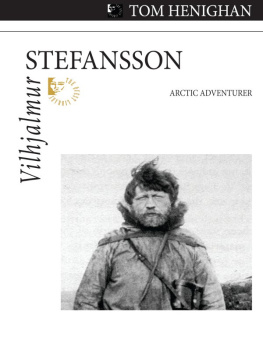
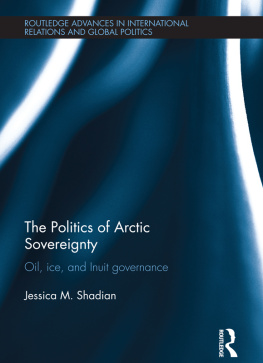
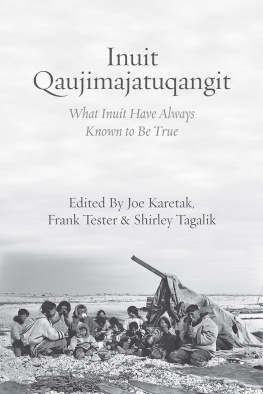
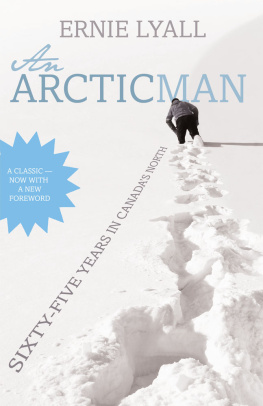
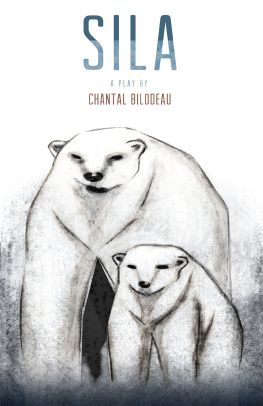




 dundurn.com
dundurn.com @dundurnpress
@dundurnpress dundurnpress
dundurnpress dundurnpress
dundurnpress